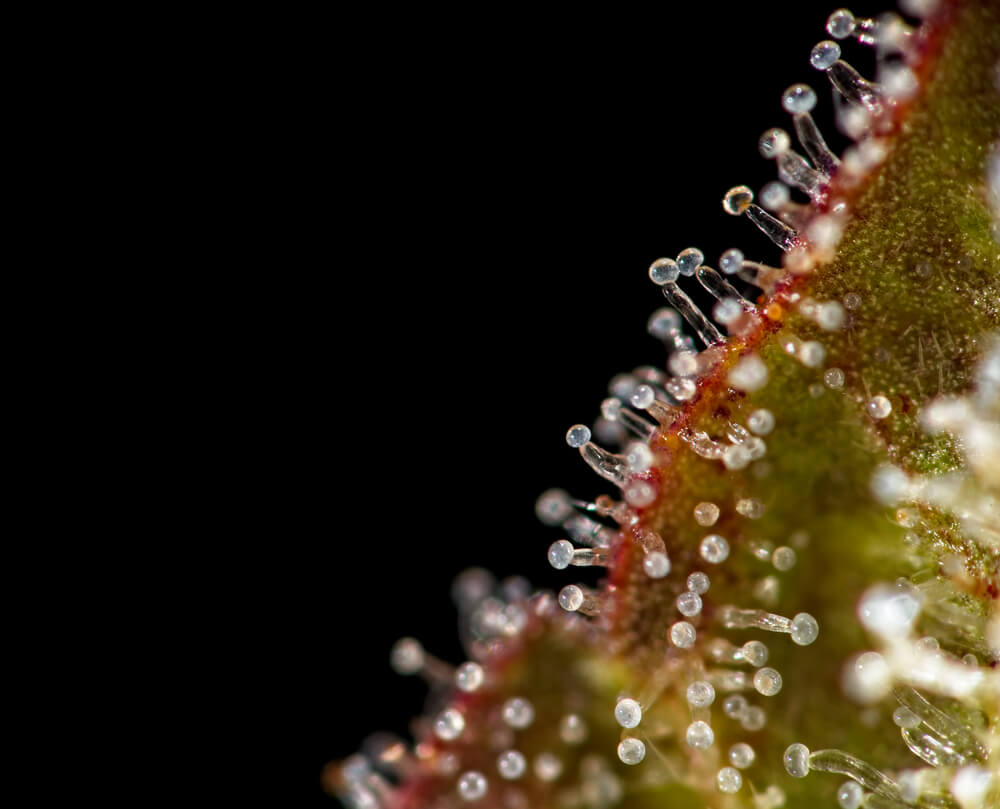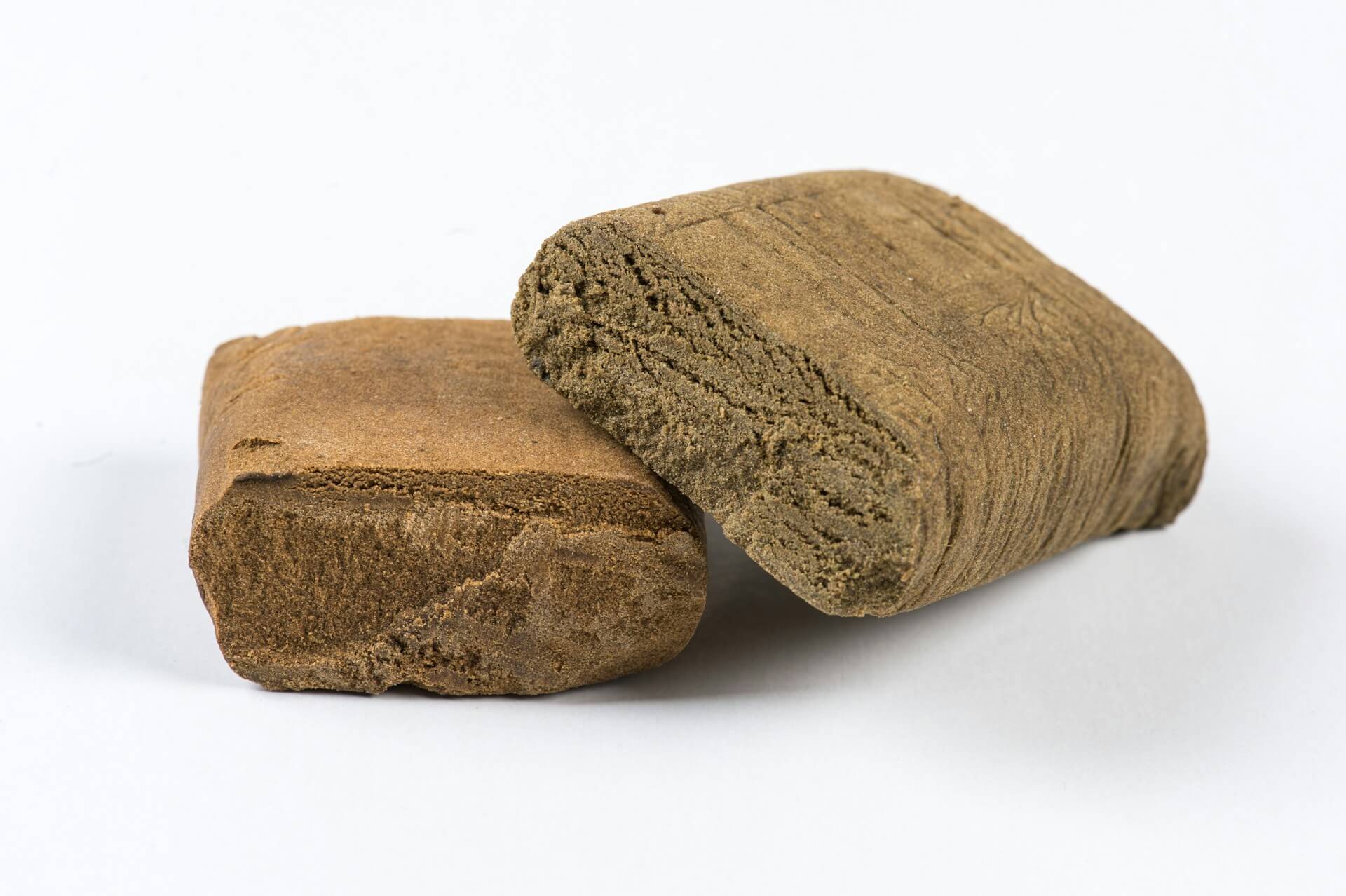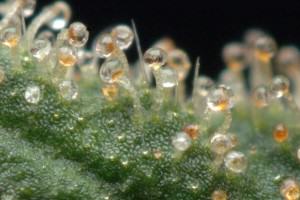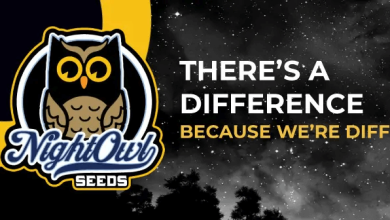Cannabis trichomes explained- Alchimia Grow Shop

All indoor or outdoor cannabis crops have a beginning and an end, in this case, we will deal with the last part of the crop, the harvest of the trichomes. The time of the harvest will be based on the visualization of the state of the trichomes together with the knowledge we may have of the cultivated plant, either through information provided by the same seed bank that created it or by growers who may have grown it before.
In the past, marijuana plants were harvested when the grower believed they were ready. To have this knowledge about the best time to harvest trichomes required a great deal of experience in cannabis cultivation, which often meant that one ended up harvesting either immature or overripe cannabis.
Marijuana trichomes
Harvesting cannabis plants at different stages of maturity is a great way to compare the different types of effects that can be found in the same plant or cutting. Indica plants generally have a more narcotic than active effect and a cleaner than psychoactive effect at their peak of harvest, but depending on the time of harvest, the final effect as well as its terpenic quality can vary, just as in cannabis sativa plants.
If marijuana plants are harvested a few days – or weeks – before the optimal harvest point, the terpene quality will be at its peak but may not be fully complete. Then the smells and flavors will vary a little from “the original”, obtaining a different final taste.
If you harvest the plants early, you must ensure that the terpenes in the buds are sufficiently mature, avoiding harvesting when it still smells “green,” since the plant will never fully present its aromas and these will not improve even with a good cure.
If, on the other hand, we allow the cannabis plant to mature excessively, it may have other variations that, on the one hand, will tend to lead to excessive maturation of the trichome and, on the other hand, to a reduction in the physical and terpenic quality of the cannabis flowers.
Cannabis buds are generally compact flowers to a greater or lesser degree and are covered by thick layers of resin composed of many resin glands. When we extend the harvest date and these buds suffer from excessive ripening, we will find flowers that have lost some of their original properties. The calyxes will be swollen with air inside, giving them a very voluminous visual appearance but decadent inside as the cell walls age quickly, leaving a bud with less weight and quality.

The smells and flavors will have become rarefied, leaving traces that interfere with the flavors, negatively impacting consumption. The trichomes will be clearly affected and the THC levels will be reduced as the optimal days for harvest pass. The longer it takes to harvest, the less THC you’ll find in the trichomes.
Although stalked glandular trichomes are the ones producing larger amounts of cannabinoids and terpenes, other types of trichomes can be found on the plant:
- Cystolithic trichomes
- Bulbous trichomes
- Capitate sessile trichomes
- Capitate stalked trichomes
Mature resin glands
To know when to harvest marijuana plants accurately, we can use, apart from the grower’s experience, a magnifying glass or microscope with 40 to 100 magnifications to easily observe the morphology of the trichome.
Trichomes have their cycle, like everything in life. They are born as simple points on the leaves and calyxes, and then gradually develop into a stick-shaped stalk with a sphere at the top, giving it the appearance of a “lollipop.” These glands are where THC, CBD, CBN, and other components of cannabis resin like terpenes will develop.
When the stalked glandular trichome has taken on this “lollipop” appearance, we can look at its color, which will initially be transparent or translucent. This translucency can be associated with a trichome without THC or with minimal levels compared to what it could have in an optimal state of harvest.
As the flowering of the cannabis plant progresses, the trichome will gradually take on a whitish color that fills the body and the upper capsule of the trichome. At this point, we can say that the plant is at its optimal point for harvest. Otherwise, if left for longer, the trichome will darken, turning amber or purple, gradually reducing in size, oxidizing and degrading the THC, while increasing the levels of other cannabis compounds like CBN.

There are clear differences between the trichomes of indica and sativa marijuana plants. Generally, the trichomes of sativa plants tend to be thinner and longer than the trichomes of indica plants. The size of the resin gland can also vary depending on the growing conditions. In indoor growing, the resin glands are usually larger than in outdoor cannabis plants, since climate control greatly influences the development of the resin. We must not forget that proper nutrition for the plant will always improve both the quality and quantity of the trichome.
It is important to note that plants grown outdoors, by enjoying other types of solar radiation such as gamma or UVA, directly intervene in the creation and quality of the trichome and its components, increasing the levels of psychoactivity contained in the trichome. For this reason, many of the landrace cannabis plants that are not acclimatized to indoor cultivation do not offer the same potential when grown indoors as when grown outdoors, although this does not usually happen with commercial cannabis previously acclimatized to indoor cultivation.
When to harvest cannabis plants?
In the buds of the plant, we will find many trichomes: larger, smaller, tall, short, chubby, degraded, etc., and each one in its respective stage of maturation so that we can see through the magnifying glass or microscope the different types of trichomes that are conjured at the same time.
As we have previously mentioned, with the information provided by the seed banks and the visualization of the trichomes we will be able to more easily choose the right cannabis plants to harvest. When the trichomes are fully formed and there is a large majority of whitish trichomes, a few transparent ones, and some amber ones we can say that the bud is ready to be harvested.
At this point in the crop, we can say that the plants are ready to be harvested so we will move on to manicure the buds, safeguarding the remains of leaves and small flowers with large quantities of resin so that we can make concentrates like BHO, hashish or rosin hash.

Depending on the cutting date of the marijuana plants, we can find different effects and flavors, and it is up to the grower to decide which one he prefers. It should be noted first that marijuana plants grown from seed will have a longer flowering period than the same plant grown from cuttings.
This is especially true for indoor crops where growing times are reduced to a short growth period and the plant may not have reached maturity yet. If it has not yet reached maturity, even if it is subject to the 12-hour flowering period, the plant will not flower. This should not be confused with the stretch period when plants continue to grow during flowering and then start flowering in two to four weeks, depending on whether it is an indica or cannabis sativa marijuana plant.
When to harvest marijuana plants according to trichome ripeness
Here you have a translation of an article from TGA Subcool about the harvest of cannabis plants. Both the effect and taste of marijuana are directly related to its harvesting time. How to know which is the perfect time for harvest? What are trichomes and how to harvest plants depending on their colour? How to maximize your crops according to the desired effect? Here you have the answers to all these questions, with examples and personal experiences…Subcool
So, to be completely sure when to harvest cannabis plants, we can carry out an exhaustive monitoring of the morphology of the trichome so that when it is at its optimal point of maturity we can harvest the plants in their maximum splendor.
Happy harvest!





